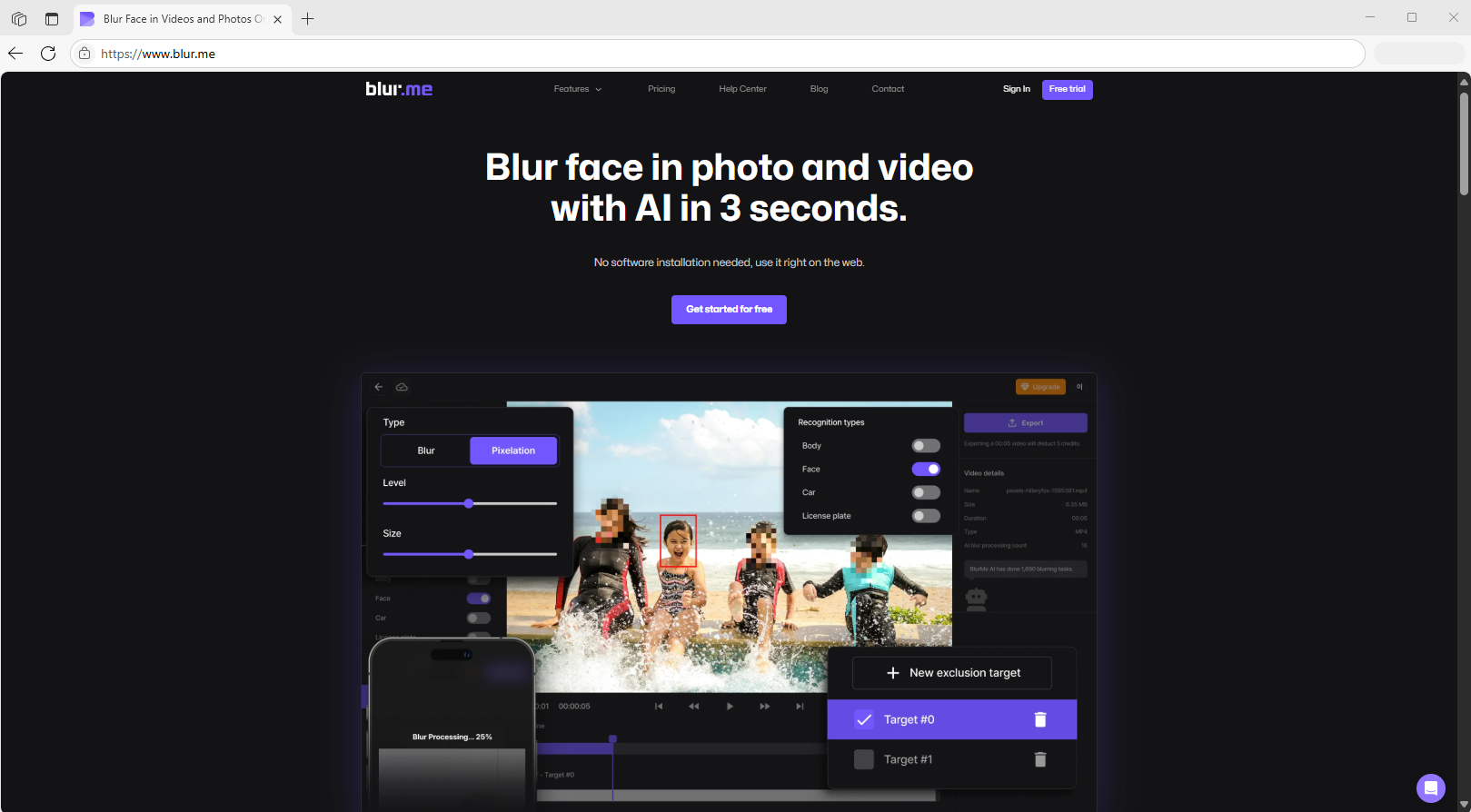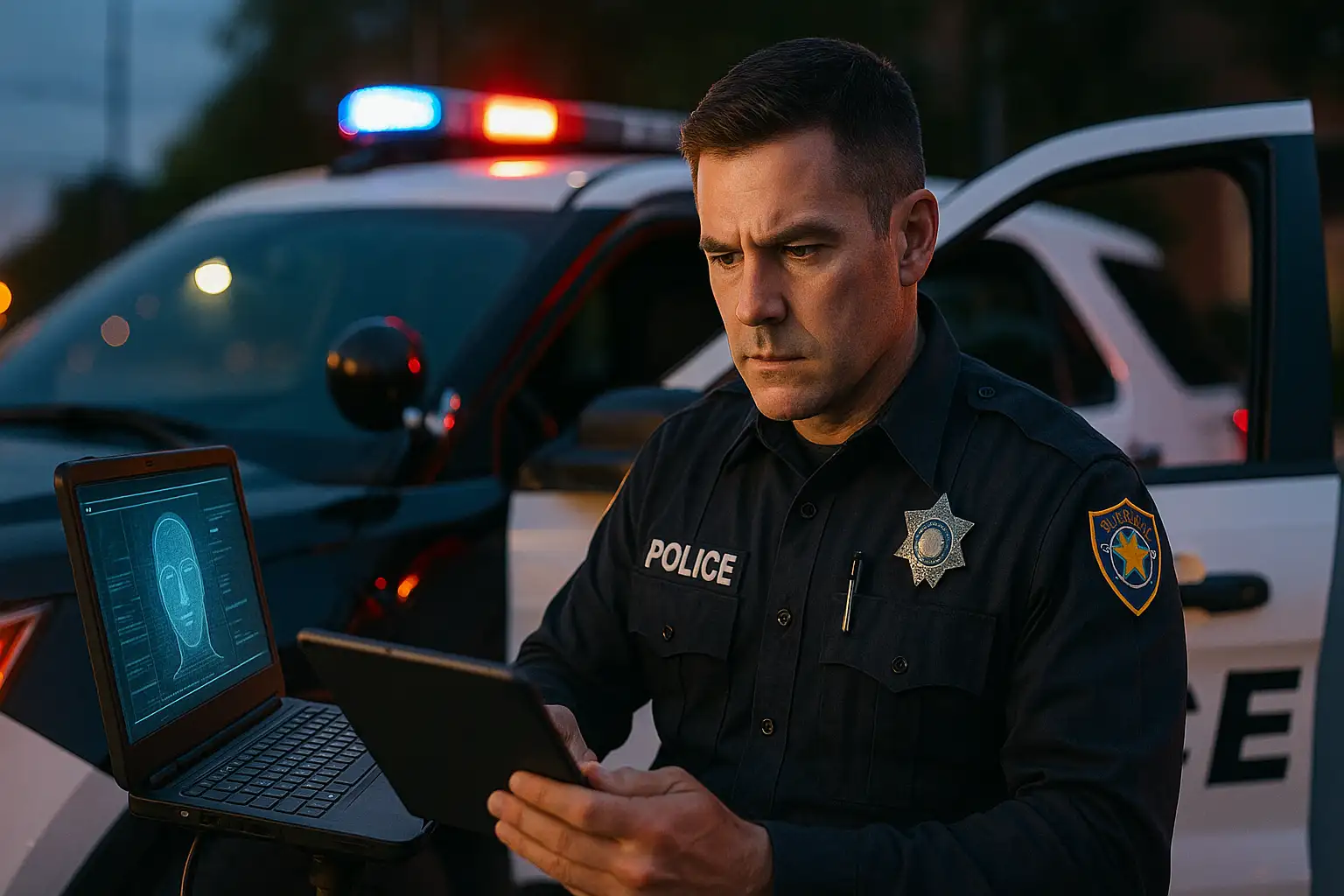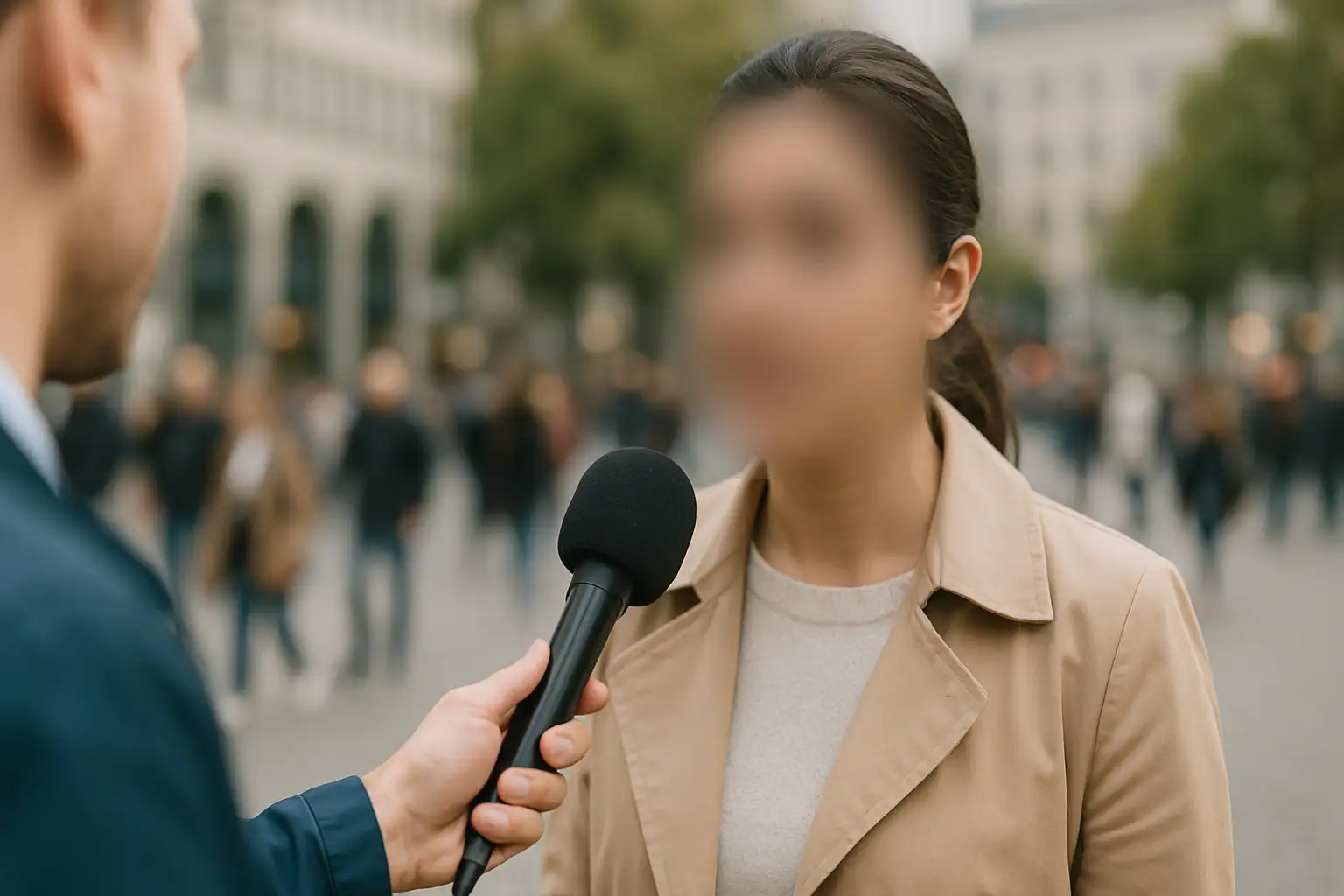Video redaction services are essential for law enforcement, government agencies, security teams, and businesses managing sensitive video content. With the rise of body-worn cameras (BWC), public CCTV, FOIA requests, and GDPR regulations, organizations must ensure videos are properly anonymized before sharing or releasing.
Modern video redaction involves more than just blurring faces. Redaction software for FOIA requests, AI redaction tools, and automated video redaction software now allow teams to blur faces, redact license plates, sensitive documents, or any identifiable data quickly and accurately.
What is Video Redaction?
Video redaction is the process of removing, obscuring, or anonymizing sensitive content from videos.
Key benefits of video redaction:
- Compliance: FOIA, GDPR, and NDA requirements
- Privacy protection: Safeguard citizens and employees
- Legal readiness: Protect against liability
- Efficiency: Automated tools save hours of manual editing
Top 10 Video Redaction Services for CCTV & BWC (2025)
Here’s a deep dive into the most effective video redaction services, including AI-powered tools, cloud-based platforms, and offline software.
1. BlurMe – AI-Powered Video & Image Redaction for Organizations

Best for: Agencies, security teams, enterprises, and organizations handling CCTV or surveillance footage.
Overview:
BlurMe Face Blur is an online blur tool built for AI-powered video and image redaction. Unlike consumer blur tools, it delivers automated, compliance-ready anonymization for organizations managing CCTV, bodycam footage, or investigative data. Trusted by security teams, agencies, and enterprises, BlurMe ensures every frame meets GDPR, FOIA, and other global data privacy standards.
Key Features:
- Surveillance Integration: Works seamlessly with large-scale CCTV systems and uploaded video feeds.
- Automated Detection: AI identifies faces, bodies, license plates, and other sensitive objects across video frames.
- Scalable Infrastructure: Handles high-resolution, long-duration videos for agencies and enterprises.
- Audit Trail Support: Enables compliance teams to verify redaction consistency.
How BlurMe Works:

- Uses AI detection and tracking to identify all faces and sensitive regions in your video.
- Applies dynamic blur or pixel masking automatically.
Step-by-Step Example: How to Use BlurMe for Enterprise Surveillance Redaction
- Go to BlurMe Studio.
- Upload CCTV or surveillance footage directly from your system.
- Enable AI Blur Mode for automatic detection.
- Let BlurMe process your video—faces and sensitive details are blurred automatically.
- Review, fine-tune, and export your compliance-ready redacted video instantly.
2. CaseGuard – Enterprise Automated Video Redaction Software

Best for: Government agencies, FOIA teams, legal departments.
Key Features:
- Automated face redaction, license plates, and documents
- Supports FOIA redaction with audit logs
- Batch processing for multiple videos
- Cloud or on-premise deployment
- GDPR and privacy compliance built-in
Pros: High automation, detailed audit trails, large-volume processing
Cons: Higher cost; learning curve for beginners
Use Case: A state police department used CaseGuard Studio to fulfill 200 FOIA requests monthly, automating most video redaction tasks while remaining GDPR-compliant.
3. Veritone Redact – AI-Powered Bodycam Redaction

Best for: Mid-size police departments focused on BWC footage.
Features:
- Face, object, and license plate redaction
- AI-assisted tracking for moving subjects
- Cloud collaboration for multiple agencies
- Fast export and secure storage
Pros: High-speed processing, AI-assisted, multi-agency collaboration
Cons: Subscription required, cloud-only
Use Case: Veritone helped a regional police force redact multiple bodycam videos daily with minimal staff intervention.
4. Axon Redaction – Police AI & BWC Integrated Solution

Best for: Departments using Axon bodycams.
Features:
- Integrated with Axon Evidence platform
- Redacts faces, license plates, and audio
- Automated motion tracking
- FOIA & GDPR compliant workflows
Pros: Seamless integration with existing BWC hardware
Cons: Limited to Axon ecosystem
Use Case: City police used Axon Redaction to automate FOIA release for dashcam footage with consistent accuracy.
5. OpenEvidence – FOIA & GDPR Video Redaction Platform

Best for: Agencies handling large volumes of public records requests.
Features:
- Video and document redaction
- FOIA request tracking
- Redacted video audit logs
- GDPR compliance reporting
Pros: Centralized management, secure, compliant
Cons: Not ideal for small organizations
Use Case: Municipal agencies processed hundreds of video FOIA requests efficiently using OpenEvidence, ensuring all PII redaction software standards were met.
6. RedactX Cloud – Simple Redaction App for Beginners

Best for: Small teams or individuals needing fast redaction services.
Features:
- Drag-and-drop interface
- Pixelate, blur, and mosaic effects
- AI-assisted face tracking
Pros: User-friendly, low-cost, quick deployment
Cons: Not suitable for large-scale enterprise needs
Use Case: HR departments used RedactX Cloud to anonymize CCTV for internal investigations.
7. SecureRedact Enterprise – High-Security On-Premise Redaction

Best for: Organizations needing full control over secure redact workflows.
Features:
- Encrypted storage
- Full audit logs
- Role-based access for staff
- On-premise deployment
Pros: Maximum security, compliant for law enforcement & legal use
Cons: High cost, setup complexity
Best Practices for Video Redaction in 2025
- Prioritize AI-assisted workflows – reduces errors, saves time
- Maintain an audit trail – record what was redacted and why
- Use motion tracking – ensures moving objects/people are fully anonymized
- Validate exports – double-check videos before release
- Follow GDPR and FOIA standards – redaction must be compliant
- Plan redaction workflows – batch process long recordings for efficiency
Tips for Redacting CCTV & BWC Footage
- Always back up originals before redaction
- Use cloud-based AI redaction for faster processing
- Check for audio redaction needs – some tools allow muting sensitive conversations
- Adjust blur/pixelation strength depending on release requirements
- Regularly train staff with redaction training programs
FAQ – Video Redaction Services
1. What is video redaction and why is it important?
Video redaction is the process of obscuring or anonymizing sensitive content in videos, such as faces, license plates, or private documents. It’s essential for CCTV footage, bodycam videos, and public surveillance to ensure privacy compliance with GDPR and FOIA regulations.
2. How do I blur CCTV surveillance footage quickly?
Blurring CCTV footage requires either AI-powered redaction software or manual masking tools. Modern solutions like BlurMe Enterprise allow you to automatically track and blur moving faces, license plates, and sensitive objects. For step-by-step instructions, check our guide on Blur CCTV Surveillance Footage.
3. How can I blur a face in a video online?
Online tools make face blurring simple. Using AI tools like BlurMe, you can automatically detect faces, track them across frames, and apply dynamic blur or pixelation. Learn more in our tutorial on how to blur a face in video.
4. What AI tools are available for face anonymization?
AI-powered solutions use machine learning to detect and anonymize faces, objects, and sensitive areas in videos automatically. BlurMe, along with other enterprise redaction platforms, provides automated face tracking, privacy masking, and compliance-ready redaction. Explore more at AI tools for face anonymization.
5. Which redaction software is best for FOIA and GDPR requests?
Choosing the right software depends on volume, compliance needs, and workflow. Platforms like CaseGuard Studio, OpenEvidence, and BlurMe Enterprise offer FOIA and GDPR-compliant video redaction with audit trails, automated masking, and high-volume processing. For a full comparison, see Redaction Software for FOIA.
6. How do I pixelate a video effectively?
Pixelation is useful for anonymizing faces or sensitive objects without fully blurring the image. Many AI redaction platforms, including BlurMe, allow you to choose pixelation or mosaic masks. Learn how in our guide on pixelate video.
7. Can I add a blur effect to videos after recording?
Yes, post-production blurring is possible with online or desktop tools. Platforms like BlurMe let you blur faces, objects, or backgrounds after recording for secure sharing or compliance. See our tutorial on Add Video Blur Effect for a step-by-step process.
8. What is CCTV redaction software, and how is it used?
CCTV redaction software is designed to anonymize public surveillance footage and protect privacy while maintaining compliance with GDPR or FOIA. BlurMe Enterprise and similar platforms track multiple moving objects and faces, applying blur or pixelation automatically. For more details, see CCTV Redaction Software.
9. How do I ensure GDPR-compliant video redaction?
GDPR-compliant redaction requires anonymizing faces, license plates, and other identifiable information before sharing videos publicly. Using automated tools with audit trails, such as BlurMe Enterprise, ensures consistency and compliance.
10. How do AI redaction tools speed up video processing?
AI redaction tools automatically detect sensitive areas, track moving subjects, and apply blur or pixelation, drastically reducing manual effort. For practical examples and tutorials, see Video Redaction Service and Video Redaction Software for Law Enforcement.
Conclusion: Secure, Fast, and Compliant Redaction Starts with the Right Tool
For FOIA requests, GDPR compliance, or general privacy protection, the right video redaction service is critical.
BlurMe provides the fastest, most user-friendly solution for face redaction, pixelation, and secure redaction—all online, without complicated software. Whether you’re a police department, a security team, or a business protecting customer data, BlurMe makes fast redaction easy and reliable.









